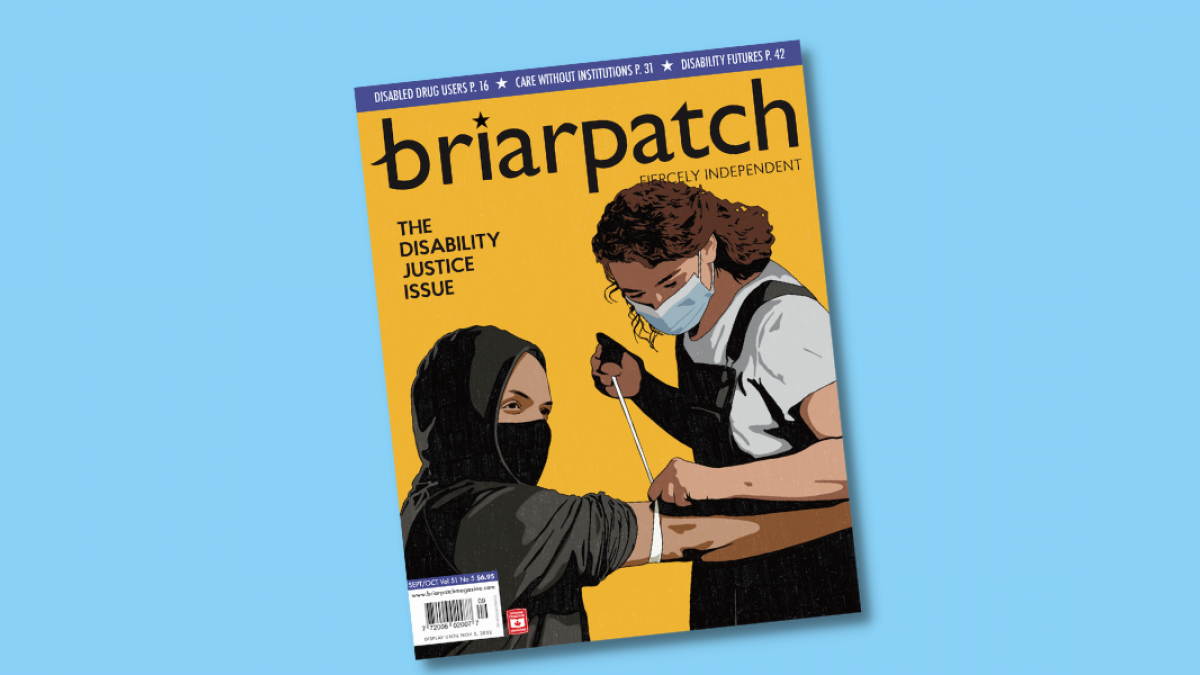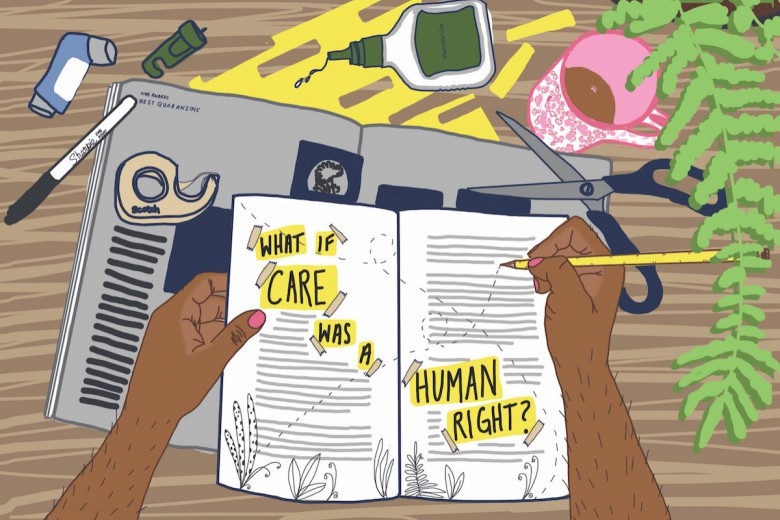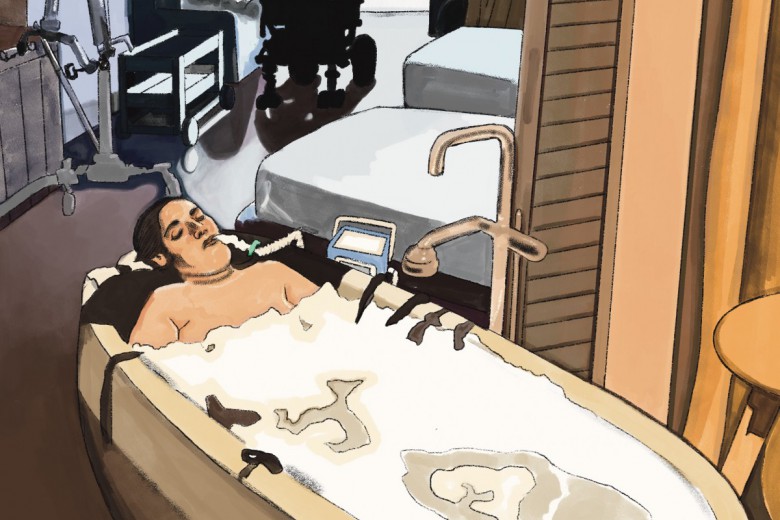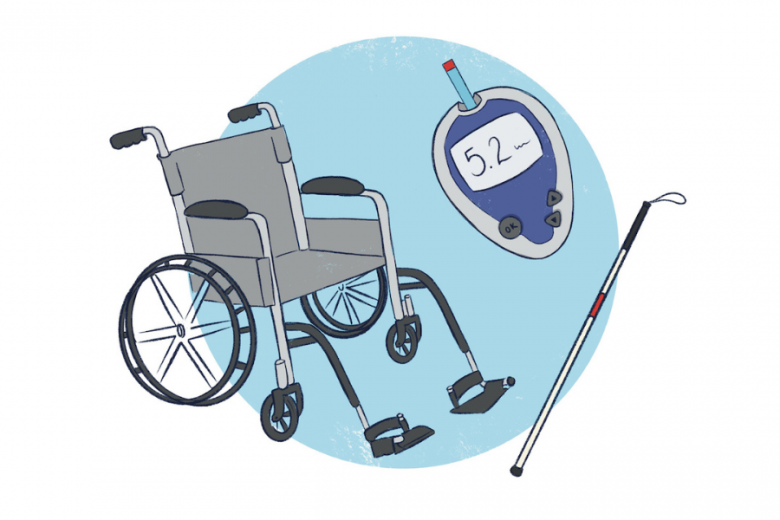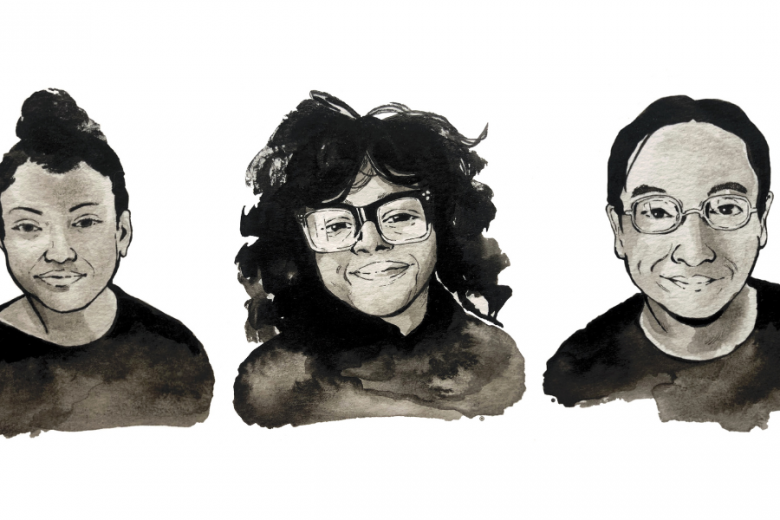Plain language summary (What is this?)
- This is a letter written by the collective of people who came together to create this special issue of Briarpatch.
- This issue focuses on disability justice. Disability justice means an end to the systems that make people disabled and debilitated, like capitalism and colonialism. It also means a future where there is enough care, community, and support for everyone to thrive.
- We noticed that left-wing movements and publications do not pay much attention to the disability justice movement. We made this special issue because we think that there is a lot that the left can learn from disabled activists. We also want to encourage disabled people to get involved in disability justice work.
- There are some articles that didn’t make it into this issue: articles about how poverty, pollution in Indigenous communities, police and prisons, and accessibility laws affect disabled people. We hope to see these articles in a future issue of Briarpatch.
- We made changes to Briarpatch while making this issue, to make it more accessible. Briarpatch’s website now has alt-text. Articles in this issue have plain language summaries. And we hope to make audio versions of all articles.
As disabled organizers, people often ask us, “What is disability justice?” One of the more succinct answers comes from queer, disabled organizer and writer Mia Mingus: “Disability justice is simply another term for love.”
When we say we want disability justice, we don’t just mean wheelchair-accessible buildings and sign-language interpretation that allow business to carry on as usual. We mean an end to the systems and structures that disable and debilitate us and a future where there is enough care, community, and support for everyone to thrive.
This special issue began with a conversation among Disability Justice Network of Ontario (DJNO) organizers on how marginalized the disability justice movement is on the left. When we searched “disability” or “disabled” in many of our favourite independent outlets, at most a handful of results would pop up. Before this issue, Briarpatch had fewer than a dozen articles focused on disability on its website. It was clear to us that there was a lot the left didn’t know about the disability justice movement in so-called Canada, as well as a lot that it could gain by listening.
COVID-19 has shone a spotlight on the overwhelming ableism – rooted in eugenics – that shapes public life and policy. Two and a half years after COVID-19 was declared a global pandemic, despite significant advances in our understanding of transmission and the rollout of vaccines, 2022 is on track to be the deadliest year yet in so-called Canada. Meanwhile, profit-driven vaccine inequity continues to ensure that much of the global majority has little or no access to life-saving vaccines or other preventative measures against COVID. But the left in so-called Canada has broadly failed to coordinate a cohesive response to the virus that centres the needs of those who are most vulnerable to its effects.
It was clear to us that there was a lot the left didn’t know about the disability justice movement in so-called Canada, as well as a lot that it could gain by listening.
As disabled writer, artist, and disability justice activist Leah Lakshmi Piepzna-Samarasinha reminds us in this issue, since the beginning of the COVID-19 pandemic, disabled people have distributed masks, taught people how to make DIY air purifiers, explained how to execute care plans, and advocated for vaccine equity. They write, “you are organizing and surviving because of disability justice.” While provincial and federal governments carry on pretending that there never was a pandemic – let alone that one’s still happening – it has never been more apparent that disabled leadership and wisdom are critical to just futures.
Since January, members of the editorial collective, comprised of members of DJNO, DJNO’s Youth Action Council, the Disability Justice and Crip Culture Collaboratory, and Briarpatch staff, have met every few weeks to sketch out a vision for this issue. We talked about the key issues facing disabled people in so-called Canada – from the overdose crisis to institutional violence, to long COVID and eugenicist public health policy – and reached out to disabled writers to tackle them.
As Ahona Mehdi writes in this issue, disability justice is often misunderstood and conflated with ideas of self-care. But disability justice, she insists, is “rooted in the understanding that refusing to conform to capitalistic ideals of productivity and normativity is deviant, love-fuelled resistance. [Disability justice] means we leave space for folks to rest, to move at their own pace, to be angry or sad or sick or depressed. It’s building toward a world wherein we don’t have to [...] be ‘easy to deal with’ to be loved and valued.”
“If most of the world is disabled, it is an opportunity to claim our power and build an accessible, just world. Everything has been different; everything has to be different; everything can be different.”
Over the last year, disability justice organizers in so-called Canada have fought for the future Mehdi describes. Organizers warned against the expansion of medical assistance in dying (MAiD) legislation, explaining that without affordable, accessible housing, publicly funded home care, assistive devices, and pharmacare, MAiD means coercing disabled people to die. Organizers have also built off the work of prison abolitionists, demanding police-free schools and health care, along with the abolition of all sites of incarceration, including prisons, psychiatric institutions, and long-term care facilities. As Destiny Pitters notes in the roundtable in this issue, organizing has an inherent breadth in the disability justice movement: “The [disability justice] movement is one of the most holistic, intersectional movements out there because it is inherently anti-racist, queer- and trans-centred, a critical evaluation of the status quo.”
While this issue is much longer than a typical issue of Briarpatch, there is also a huge range of organizing under the banner of disability justice, so this issue is by no means a comprehensive overview of the movement. Due to constraints of time, space, and capacity, some cornerstone pieces didn’t make it to print, but we hope to see them in a future issue of Briarpatch, including Sarah Jama’s article on the policing and incarceration of disabled people, Allen Mankewich’s piece on the limits of accessibility legislation, an article on disability assistance and poverty, and an article on environmental racism against Indigenous communities.
We also took this opportunity to make Briarpatch more accessible. We included plain-language summaries at the beginning of every article, drawing out the articles’ key points in clear, concise phrasing. We’ve increased the contrast of some text on Briarpatch’s website to make articles easier to read. As of this issue, Briarpatch’s website also includes alt-text for the photos and illustrations that accompany articles, and we hope to host an introductory workshop on alt-text so that readers can help us write alt-text for past issues. We hope to print copies of this issue in braille. We also plan to record audio versions of all articles, which you can find on Briarpatch’s website. If we’re able to increase our staff size, we’d like to continue to do this for future articles.
The lineage connecting disabled ancestors to the present day, and building on this wisdom to imagine more radical possibilities for the future, has always been critical and foundational to radical activism.
This issue is undeniably heavy, so please take care while reading. In the midst of the violence of ableism, it is equally important to think about the future of disability justice and to imagine futures rooted in hope, connection, community, and sustainable care. Given the vast scope of topics to cover, hope and futurity did not get taken up in depth in the text of this special issue. That said, the interview with Piepzna-Samarasinha begins to sketch out visions for just futures as imagined by disabled leaders. The lineage connecting disabled ancestors to the present day, and building on this wisdom to imagine more radical possibilities for the future, has always been critical and foundational to radical activism.
In putting together this issue, we not only want to share insight into the disability justice movement, but we urge other disabled people to take up disability justice work and expand our collective capacity for transformative disability justice and politics in so-called Canada. As Piepzna-Samarasinha explains in her interview, “if most of the world is disabled, it is an opportunity to claim our power and build an accessible, just world. Everything has been different; everything has to be different; everything can be different.”
Disabled organizers have always known the importance of interdependence, mutual aid, and cross-issue solidarity for our movements, and we have used those skills to make our communities safer. Our hope as the editorial collective is that this special issue will provide an entry point for further discussions on the left about both the ongoing violence and ableism that exists at the heart of capitalism and colonialism, as well as the urgency of listening to the disabled leadership that has been central to so many struggles in the past and present and which will continue to be at the forefront of future organizing.
The Disability Justice Issue editorial collective:
Saima Desai
Kelly Fritsch
Yasmine Simone Gray
Sarah Jama
Sophie Jin
Rachel Jobson
Megan Linton
Ahona Mehdi
Amani Omar
Destiny Pitters
Xue
About plain language summaries
In this issue, articles are accompanied by a plain language summary. This is a bullet-point summary of the article that is written using short sentences, active voice, and commonly-used words. Plain language summaries aim to make information accessible to people with intellectual and developmental disabilities. To learn more, you can read this interview about plain language in journalism, and this article that includes resources and examples of how to write in plain language.


